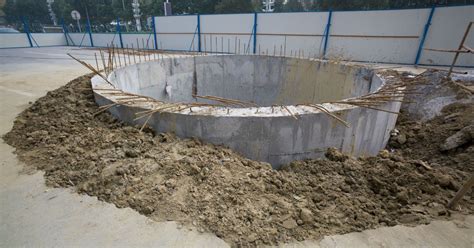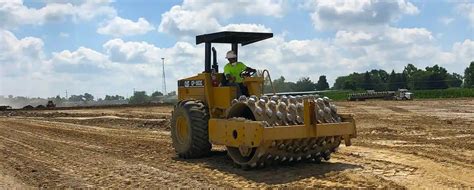compacting soil after excavation Learn the sequence, procedure and quality checks for excavation and backfilling of soil for . Type: Bucket Teeth Application: Excavator Certification: ISO9001: 2000 Condition: New Part No.: PC200 205-70-19570 Bucket Teeth Type: Earthmoving Teeth/Rock Tooth /Bucket Tiger Tooth
0 · Understanding Backfill Compaction Requirements
1 · The Importance of Soil Compaction in Construction
2 · Soil Compaction: Methods, Meaning, and Effects
3 · Soil Compaction Handbook
4 · SOIL COMPACTION AND STABILITY
5 · Proper Subgrade Prep
6 · How to Compact Soil After Excavation: Your Step
7 · Fundamentals of Soil Compaction
8 · Excavation and Backfilling of Soil – Work Sequence and Procedure
9 · Excavation and Backfilling of Soil
10 · Backfilling Trenches and Other Excavations
11 · 4
Address: No.302, Wuqi Road, Shangcun Industrial Park, Changtai, Licheng, Quanzhou, Fujian Province, China
Compaction after excavation is the process of pressing down loosened soil to eliminate air pockets and increase soil density. This ensures that the ground can support structures and prevents future issues like settling, erosion, or water pooling.Learn about soil compaction, its types, methods, and effects on soil types and construction .
Learn the sequence, procedure and quality checks for excavation and backfilling of soil for . Learn how soil compaction is used to densify soil and reduce void space, and how different types of equipment are suitable for different soil types. Find out why soil compaction is crucial for construction projects and how to .
After soil is backfilled into a trench, the loose material is compacted using some .Learn the basics of soil compaction and stability, including the effects of moisture content, .Learn how soil compaction is achieved by applying mechanical energy to reduce voids ratio . Compaction after excavation is the process of pressing down loosened soil to eliminate air pockets and increase soil density. This ensures that the ground can support .
Learn about soil compaction, its types, methods, and effects on soil types and construction projects. Find out how to identify and classify soil, and how to achieve optimal density and .
Backfilling happens after excavation, when the soil is compacted back into the trench or foundation. It is used to help protect foundations, roadways, walkways and other .
Learn about soil compaction, the practice of applying mechanical effort to densify soil by reducing void space. Find out the factors, types and effects of soil compaction, and how . Backfilling is the process of putting a mixture of soil, rocks or stones back into a trench or foundation after excavation, typically to bury a pipe. Compact proper backfill to .Learn the sequence, procedure and quality checks for excavation and backfilling of soil for foundation and trench construction. Find out the materials, tools, drawings and safety . Learn how soil compaction is used to densify soil and reduce void space, and how different types of equipment are suitable for different soil types. Find out why soil compaction is .
After soil is backfilled into a trench, the loose material is compacted using some mechanical means, such as a compactor, an excavator, or a "jumping jack"-type compactor. .Learn the basics of soil compaction and stability, including the effects of moisture content, compactive effort, and soil classification. Find out how to achieve 92 percent compaction and .Learn how soil compaction is achieved by applying mechanical energy to reduce voids ratio and increase shear strength. Find out the factors affecting compaction, such as water content, soil . Compaction after excavation is the process of pressing down loosened soil to eliminate air pockets and increase soil density. This ensures that the ground can support .
Learn about soil compaction, its types, methods, and effects on soil types and construction projects. Find out how to identify and classify soil, and how to achieve optimal density and . Backfilling happens after excavation, when the soil is compacted back into the trench or foundation. It is used to help protect foundations, roadways, walkways and other . Learn about soil compaction, the practice of applying mechanical effort to densify soil by reducing void space. Find out the factors, types and effects of soil compaction, and how .

Backfilling is the process of putting a mixture of soil, rocks or stones back into a trench or foundation after excavation, typically to bury a pipe. Compact proper backfill to .Learn the sequence, procedure and quality checks for excavation and backfilling of soil for foundation and trench construction. Find out the materials, tools, drawings and safety . Learn how soil compaction is used to densify soil and reduce void space, and how different types of equipment are suitable for different soil types. Find out why soil compaction is .
After soil is backfilled into a trench, the loose material is compacted using some mechanical means, such as a compactor, an excavator, or a "jumping jack"-type compactor. .Learn the basics of soil compaction and stability, including the effects of moisture content, compactive effort, and soil classification. Find out how to achieve 92 percent compaction and .
Understanding Backfill Compaction Requirements
The Importance of Soil Compaction in Construction

Soil Compaction: Methods, Meaning, and Effects
Soil Compaction Handbook
SOIL COMPACTION AND STABILITY

China Bucket Tips wholesale - Select 2024 high quality Bucket Tips products in best price from certified Chinese Casting Parts manufacturers, China Dumper suppliers, wholesalers and factory on Made-in-China.com
compacting soil after excavation|Proper Subgrade Prep